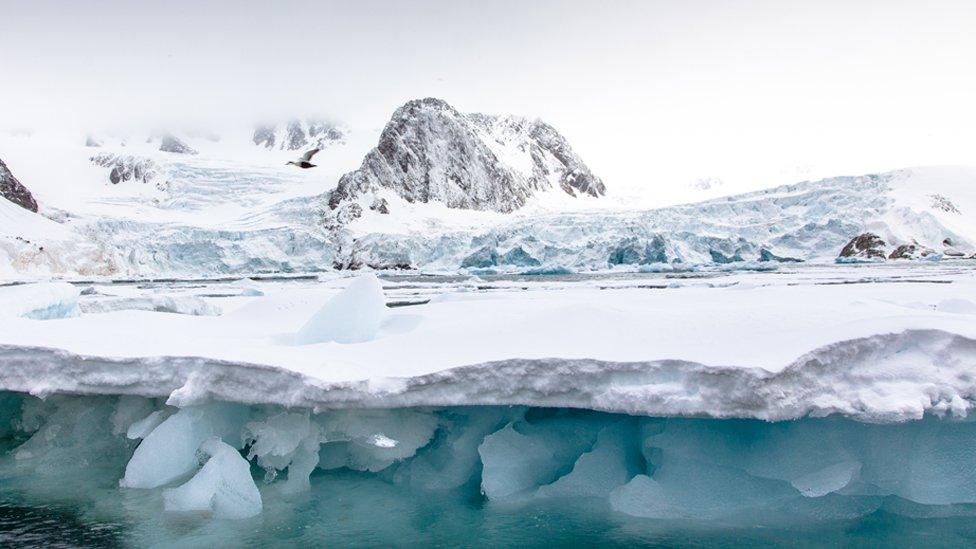Climate change: Arctic glaciers 'shrinking by 300m each year'
- Published

Scientists have been studying glaciers in the Svalbard area for two decades
Glaciers in the Arctic are shrinking by as much as 300m a year, a Scottish-based research team has found.
The researchers from the Scottish Association for Marine Science near Oban used robot submarines to study glaciers in the west of the Svalbard archipelago in the Norwegian Arctic.
SAMS scientists have been studying the area's glaciers for two decades.
Dr John Howe, leading the team, said the Arctic was probably warming faster than any other part of the planet.
He said: "There have been studies by satellite looking at the loss of sea ice in the Arctic Ocean.
"But we're interested in the role of glaciers, and in particular why glaciers are retreating and how they behave under these warmer conditions."
Dr Howe's team found Svalbard's glaciers are retreating by as much as 300m each year.
This is not merely the result of rising air temperatures. A relatively warmer ocean and local conditions in the fjords are also having an effect.
"Warm water that used to be there is now washing the front of the glacier," Dr Howe says.
"The warm water is there because of the shape of the seabed.
"Water is able to get into the fjords, and that warmer water is promoting the collapse and therefore the retreat of this ice."
That ice melts when it gets warm is no surprise but, writing in the journal Marine Geology, the team say they found an unexpected consequence.
As glaciers melt they "calve" chunks of ice into the sea
A plume of cold, fresh meltwater had been expected to protect the front of the glacier from the warmer seawater.
But it's not.
Instead it floats on the surface of the ocean, drawing seawater to the front of the glacier and accelerating the melting process.
The research has immediate implications for wildlife, fisheries and shipping.
But Dr Howe says there are even bigger considerations as the research adds to science's understanding how a warming Arctic is driving change in the sea level.
"If you lose the Greenland ice cap, which is currently pinned by the glaciers, there's this notional seven metre rise in sea levels," he said.
To make the detailed measurements underpinning the Svalbard study, the team had to get their instruments as close as possible to the point where the glaciers meet the ocean.
But as glaciers melt they "calve" great chunks of ice into the sea, causing huge waves. That's not the sort of thing to keep the health and safety-conscious happy.
So SAMS has been using something that has transformed their work in recent years: a robot.
It has a fleet of them, some with wings that 'glide' through Arctic waters for months and beam their data back by satellite.
This one, though, is distinctive.
"It's like a yellow torpedo, a submarine," says Dr Howe.
"It can 'fly' close to the glacier front and make these measurements while the boat stays a good kilometre away - safely away from the falling ice."
If the warming of the Arctic continues, robot subs may not be needed. As the glaciers retreat, Dr Howe warns they will no longer meet the sea at all.
"Rather than being dominated by a white-blue walls of ice at the head of the fjord, it'll be a river."
Members of the team with the robot submarine
SAMS is based at Dunstaffnage, near Oban, and is part of the University of the Highlands and Islands.
The work was funded by the Norwegian Research Council and led by the Norwegian Polar Institute.